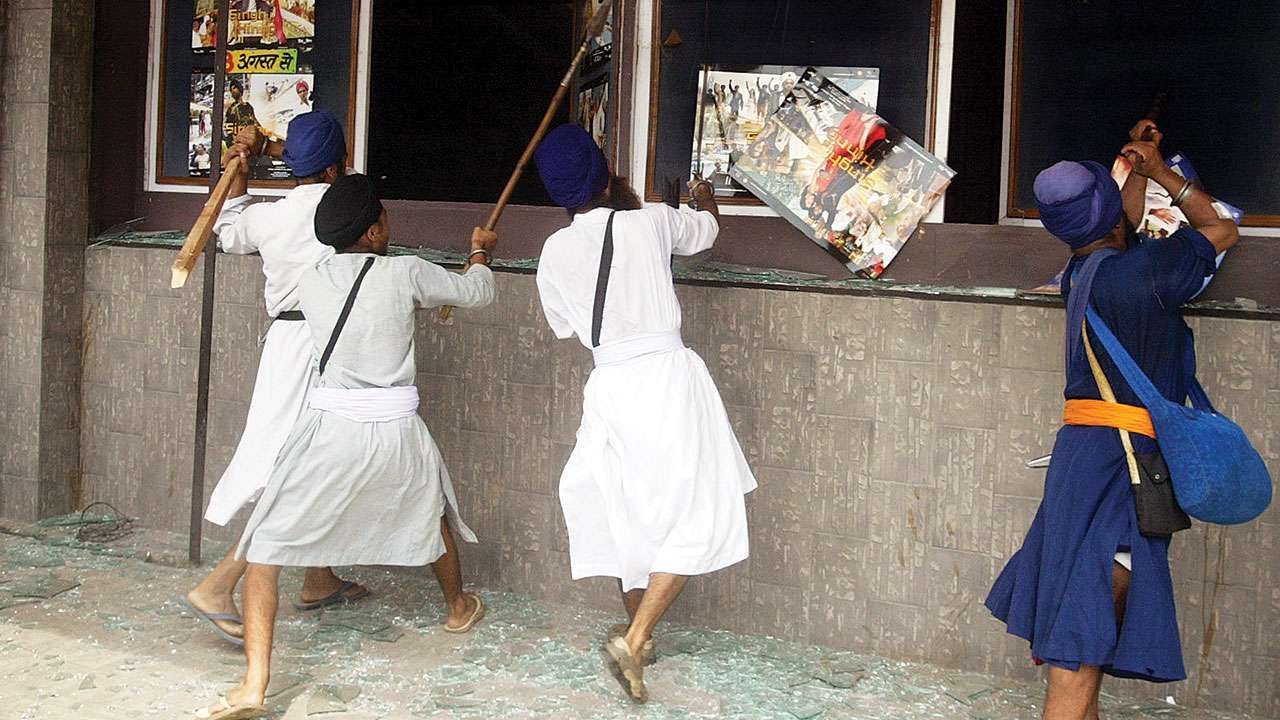
This week, Indian missions in Canada at Ottawa, Toronto and Vancouver were forced to seek enhanced security arrangements from local police for Republic Day events.
A New York-based separatist pro-Khalistan group, Sikhs for Justice (SFJ), had issued a statement through its legal adviser Gurpatwant Singh Pannu that it would honour those Sikhs who would foil the hoisting of the Tricolour during the Republic Day celebrations.
While the Canadian government usually allows such anti-India demonstrations as ‘freedom of expression’, the question is whether glorifying terrorists and inciting violence in India can be permitted.
Chief Minister of Punjab, Amarinder Singh, has stated that such activities have led to “complaints by people of deliberate attempts to vitiate the state’s atmosphere”.
The chief minister, who has earlier served in the Indian Army, has gone on record to state that five Sikh ministers in the Justin Trudeau Cabinet in Canada were Khalistani sympathisers.
He particularly made a mention of Canadian Defence Minister Harjit Sajjan as a known supporter of the Khalistani movement, who was not welcome during the course of his visit to India.
It is no surprise that Canadian Prime Minister Justin Trudeau’s 2018 maiden visit to India was a public relations disaster. Apart from getting the cold shoulder from the Indian government during the course of his seven-day-long trip, the appearance of a photograph of convicted Khalistani terrorist Jaspal Atwal with the prime minister’s wife Sophie at a Canadian High Commission reception lead to a major diplomatic row and much embarrassment to the dignitaries.
As many as seven cases have been registered by India’s National Investigation Agency (NIA) involving attacks on Right-wing leaders in Punjab.
In some of the cases, the accused are Sikhs living in Canada belonging to Babbar Khalsa International and other proscribed outfits.
It may be recalled that death threats were issued to Amarinder in 2017 at a meeting, which was also attended by Canadian ministers and politicians. The ability of the Canadian government to take action against such elements is constrained by the attitude of the ruling party, who consider Sikhs as its vote bank.
There are nearly half-a-million Sikhs in Canada, most of who live in the Toronto metropolitan area and Greater Vancouver region. Sixteen of the 26 Indo-Canadian MPs are Sikhs, of whom four are ministers.
Last year, the New Democratic Party (NDP), which is a Left-of-centre mainstream party, had elected Jagmeet Singh as its leader. He is the first non-white to be elected leader by any mainstream party. Jagmeet is alleged to have links to Sikh extremists and has been denied a visa to visit India.
In Canada, where parliamentary elections are due later this year, there is competition to woo Sikh extremist elements between the Liberal Party and the NDP.
This is a penny wise and pound foolish policy, as the majority of Sikhs in Canada are moderates and believe in a strong and peaceful India. This is particularly true for migrants since 2000, who make up a sizable number.
The competition to woo the extremist Sikhs between the Liberals and the NDP is likely to drive the moderate and a huge chunk of the Hindus to vote for the Conservative Party, which is a significant Right-wing force.
Incidentally, the Hindus in Canada outnumber the Sikhs, but are not geographically concentrated. It would be wise for all parties concerned to denounce violence and work towards improving Indo-Canadian ties, which have already come under strain due to this competitive populism.
The SFJ has been working towards holding a Sikh referendum 2020 campaign. It has been demanding a referendum on independence from India to have a so-called Khalistan in India’s Punjab, claiming that it is the centenary of the formation of the Sikh state.
However, any examination of the Sikh empire, which existed in India during the time of Maharaja Ranjit Singh will show that the Sikh state had its capital at Lahore. Even the samadhi of Ranjit Singh is in Lahore, adjacent to the Lahore fort and the Badshahi Mosque, as well as the Gurudwara Dera Sahib.
It had four divisions, namely Lahore, Multan, Peshawar and Kashmir. The majority of this empire, which stretched up to the Khyber Pass, is in today’s Pakistan and hence a referendum, if any, should be held to have a Khalistan in Pakistan and not in India.
The separation of Kashmir from the Sikh empire was carried out by the British and formalised by the Treaty of Amritsar of 1846, which made Gulab Singh the king of the independent princely state of Jammu and Kashmir under the suzerainty of the British Indian Empire.
It would be instructive to recall that lax Canadian security was responsible for two improvised explosive devices (IEDs) to be smuggled onto aeroplanes at the Vancouver International Airport in June 1985. While the first IED brought down Air India flight 182 over the Atlantic ocean, the other blew up an hour later in Tokyo’s Narita Airport killing two baggage handlers.
Air India flight 182 disintegrated in mid-air, killing 329 people, which is the largest mass killing in Canadian history and also the world’s most destructive act of aviation terrorism till 9/11.
A massive five-volume report and statement made by former Supreme Court justice John Major said the bombing was due to the failure of the Canadian police and security forces.
Author is a former top official of the Home ministry